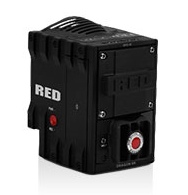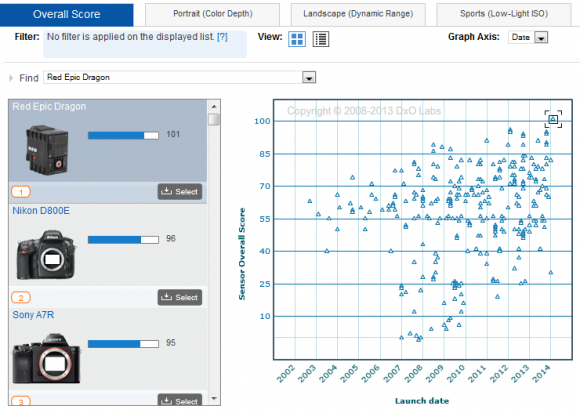DxOMark: Red Epic Dragon breaks 100-point scale, crushes full frame, medium format cameras
posted Monday, March 3, 2014 at 1:14 PM EDT

Clocking in at an impressive 101 points on its scale, DxOMark's new review of the Red Epic Dragon sets a new standard for color depth and dynamic range—all in an APS-H sensor. The high-end digital cinema camera retails for $29,000 for just the sensor module, and despite being a video oriented device does well enough with still images to outperform the likes of the Nikon D800E, or even medium format Phase One backs.
DxOMark's sensor based scoring focuses on three areas: color depth, dynamic range, and image noise. When it comes to the first two sections, the Red Epic Dragon took the top spot, outperforming the Nikon D800 for dynamic range, and equaling the Phase One IQ180 Digital Back for color depth. When it came to image noise, the Dragon scored slightly less well, clocking in at 10th place on the DxOMark scoreboard. Between those three results, that was enough to push it over the 100 point mark, and handily beat out the D800E, which came in second at 96 points.
However, as amazingly impressive as this score is, there are some major caveats. You'll notice that the Red Epic Dragon doesn't officially appear on DxOMark's ranking list, but rather is in a simulated position for the one-shot review. The reason for this is twofold. Firstly, it's a prototype design, but also DxOMark wasn't able to use the raw data directly from the sensor:
The camera records REDCODE RAW that must be processed though REDCINE-X, a free application available on the RED website. Currently, RED does not give direct access to the bayer pattern data, so we cannot clamp this sensor analysis and score in our official DxO Mark ranking.
DxOMark traditionally relies on direct, raw data from sensors to be able to run its precise tests—it's why you won't see Fujifilm X-series cameras being reviewed. While we won't say it undoes the incredible performance of the Dragon, it does put an asterisk next to its place in the top spot.
While most of us will never get a chance to shoot a $30,000+ cinema camera, this does go to show that there's still a lot more performance that can be squeezed out of an APS-H sensor. And that a cinema camera can be good enough to pull out any single frame, and use it as an image on par with that taken by some of the best photography cameras on the market.
